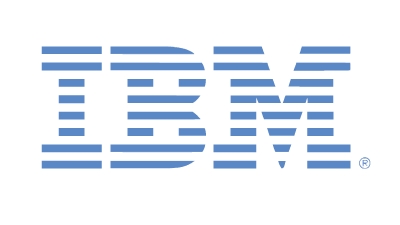People Or Profit - What Makes Your Business Wealthy?
Submitted by Anonymous (not verified) on
People Or Profit - What Makes Your Business Wealthy?
By Richard F. Libin, President, APB
How do you measure wealth -- people or profit? Most businesses will answer profit. However, if your business is “people broke” it’s also going to be “profit broke,” if not immediately, soon. The fastest way to increasing profits is by building the people wealth of your business.
Owners invest hundreds of thousands of dollars annually to bring qualified prospects to their businesses. Yet they fail to invest in training and educating their salespeople or sales managers. This is a critical limiting factor for growth.
What can your business do to increase its people wealth?
Develop people from within
Offer a career path to every employee
Equip employees with the tools they need to succeed
Develop People From Within
When organizations look externally to fill sales or management positions, they usually end up recruiting from a pool of professionals employed at other companies locally or at least within their field. These new recruits come with baggage. They bring the habits and procedures used in their previous jobs to their new position, even if they don’t mesh with the processes and culture of their new employer.
It’s like a Catch-22. The new manager is hired to run the organization based on past successes, yet is expected to do so within the boundaries of an unfamiliar and established structure. What typically happens is that the new hire changes the structure to what they are accustomed to, to what has worked for them in the past. While this may result in a temporary increase in performance, the long-term impact more often than not is decreased in performance and an increased in turn-over.
Conversely, when businesses promote from within the process has better results. When someone is promoted from sales to management, the individual already knows the company’s structure. They understand how the company does business and the processes it uses. They know the values of the organization, what the business stands for and everything else about its operations. When promoted from within, the new manager is ready to take the next step in the established structure, using familiar processes, to continue to drive growth and performance.
Offer A Career Path To Every Employee
Outlining a career path is the first step in building employee loyalty and longevity. A career path clearly demonstrates the opportunities available within the organization and creates a team environment where a common culture and goals are shared. To complement a career path, companies must offer an appealing and fair employment package. We call this a longevity plan because it serves as an incentive for employees to stay. It may include health insurance, life insurance, spousal benefits and the opportunity for substantial financial gains regardless of the position an employee currently holds.
Equip Employees With The Tools To Succeed
Having a career path is only part of the route to becoming people rich. It is essential that organizations help develop their people. To do so, business leaders must provide mandatory training and education in the skills needed for every job function for every employee. Training programs cannot be selective for several reasons:
Training and education build an understanding that part of each person’s job is to nurture and develop people below them.
It gives every employee the same opportunity to embrace new skills and apply them on an even playing field.
A star performer may emerge only after training, education and tools for success are provided.
A “superstar” in his/her current role may not have the mindset or ability to embrace the skills needed to advance, a fact that becomes clear through training.
Training and education programs don’t have to be complex, but they must be comprehensive. They should include motivational, organizational, managerial, sales, service and leadership skills.
The ROI of Being “People Rich”
Most businesses embrace what we call the Totem Pole perspective — owner or CEO at the top, managers in the middle, and salespeople at the bottom. This is especially evident in organizations where there is little training or education, no clear-cut path for advancement and high turn-over. The Totem Pole philosophy adds up to an incredible expense: hiring a salesperson who leaves within the first 90 days can cost an average of $25,000 to $30,000 depending on the business; hiring a sales manager with the same result costs an average of $80,000 to $100,000, again, depending on the business. It’s no secret that retention is crucial.
Building longevity — not simply retaining employees — requires a different mindset beginning at the highest level, one we call the Funnel. In this model, salespeople are at the top — they are the ones who put everything into the funnel. Managers are in the middle, controlling what passes through to the bottom and CEOs or owners are at the bottom reaping the rewards of a well-structured environment that follows effective business processes. In this model, employees are viewed as an asset, not an expense. Training, education, career paths and longevity programs are viewed as investments with the potential for high returns — profits and growth. Using this model, businesses can create an environment that makes them “people rich” and that leads to high financial returns.
About the Author
Richard F. Libin, president of APB, is focused on ensuring that the management and staff of APB’s clients keep pace with today’s sophisticated and more demanding customers, while excelling in customer satisfaction and maximizing gross profit in every department.
Mr. Libin has taken a leadership position in adapting new technologies for improved sales and service performance since he joined APB in 1980 as a management consultant. Since then he has worked closely with businesses using a hands-on, on-site approach to develop management and sales teams, which are more successful in achieving predetermined objectives.
Prior to joining APB, Mr. Libin was affiliated with one of the largest New England auto auctions, a Chevrolet dealership in the Boston area. During this time he developed a keen understanding for every facet of the business, starting as a technician and working his way to service advisor, assistant service manager, sales professional and ultimately, sales manager. In addition, Mr. Libin managed an independent towing, repair and body business, working closely with customers and professional teams. His experience with both wholesale and retail customers gave him a solid foundation and understanding of the internal chemistry of both service and sales departments.
Mr. Libin writes recurring articles for WARDSAUTO's IdeaXchange, The American Salesman, EyesonSales and Sales Gravy. His first book, “Who Stopped the Sale?” was originally published in 2010.






